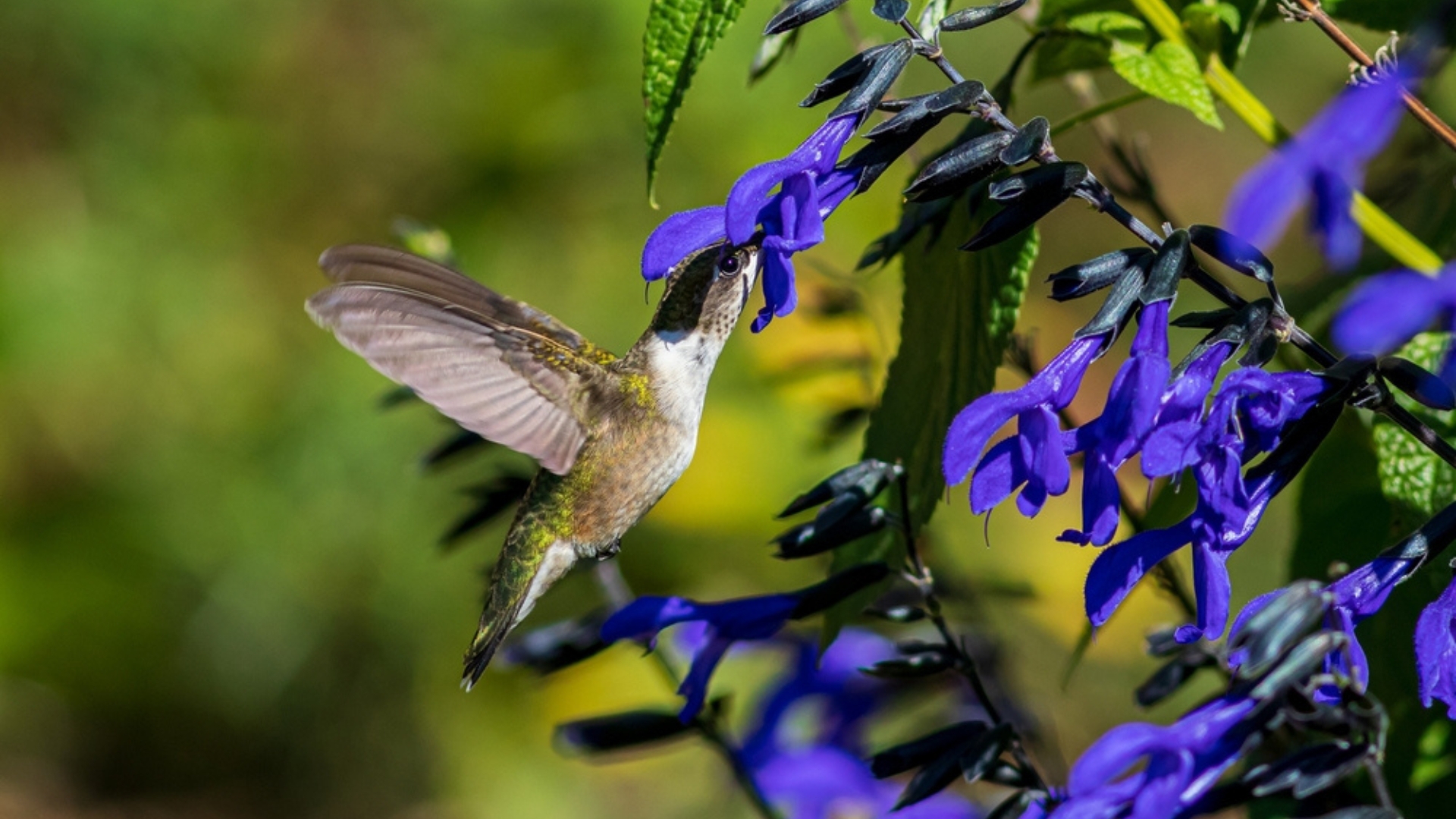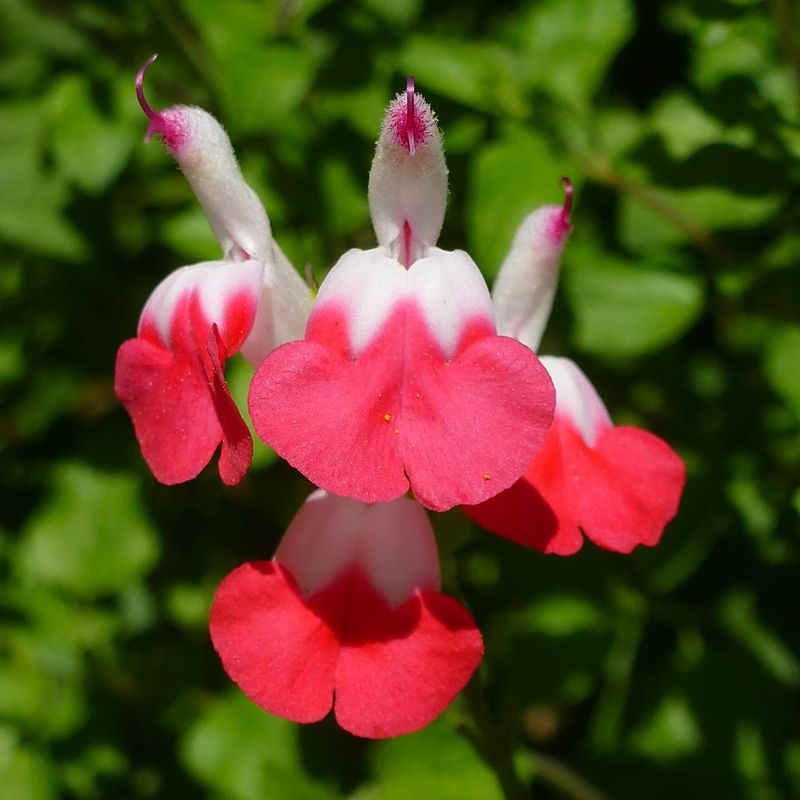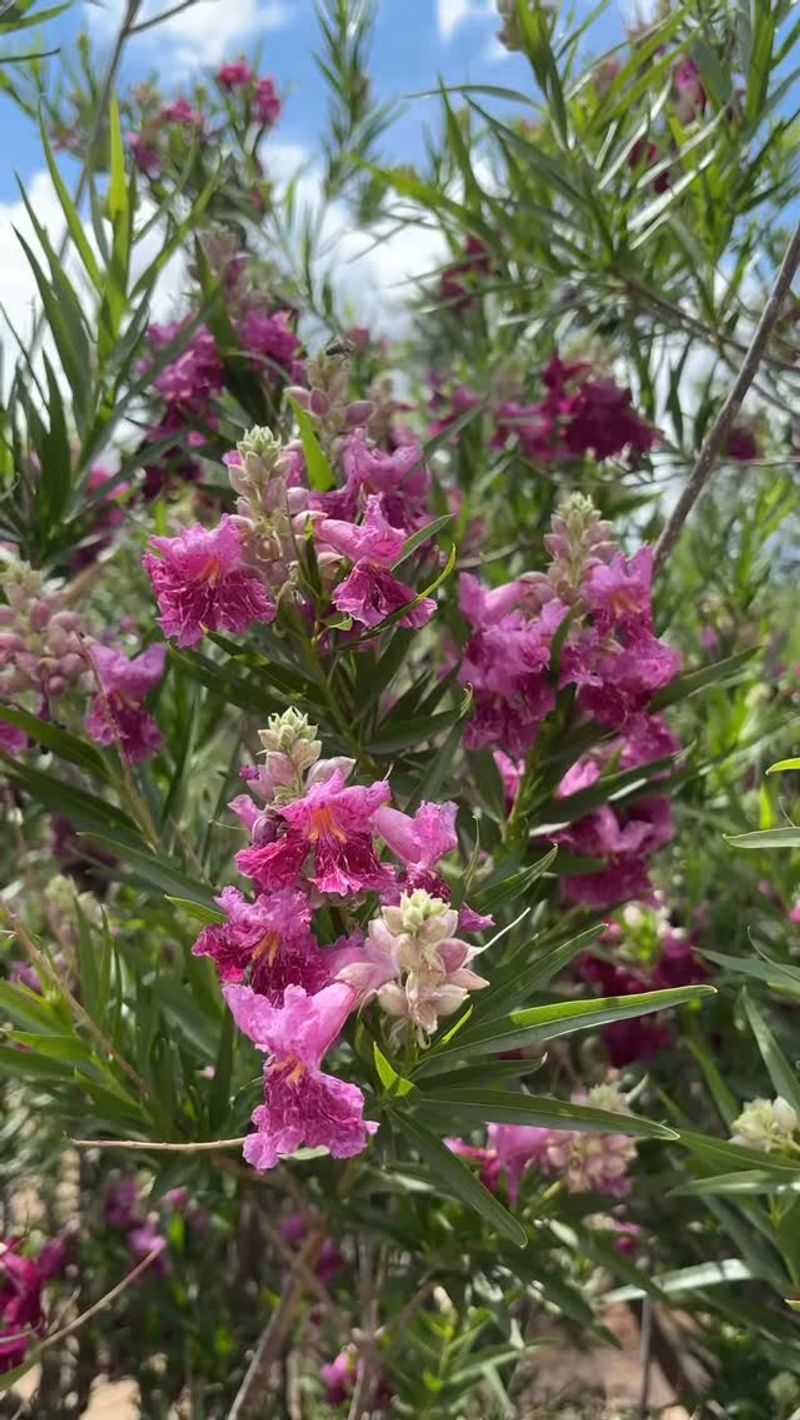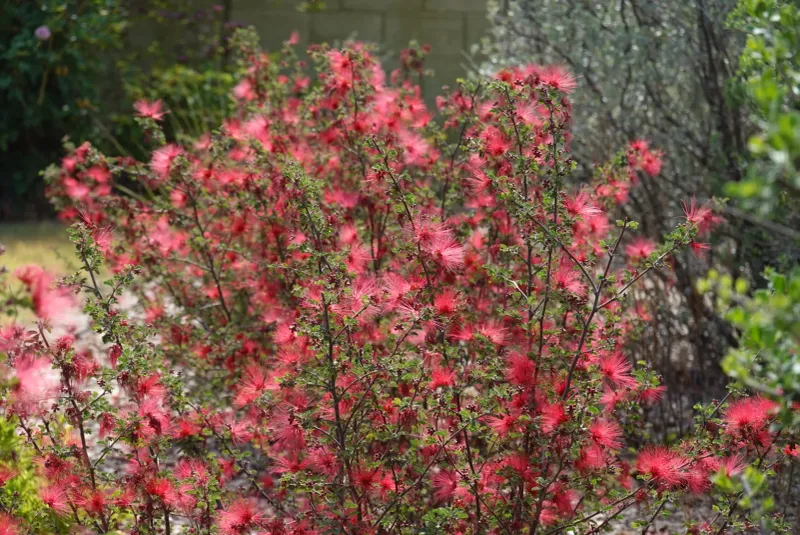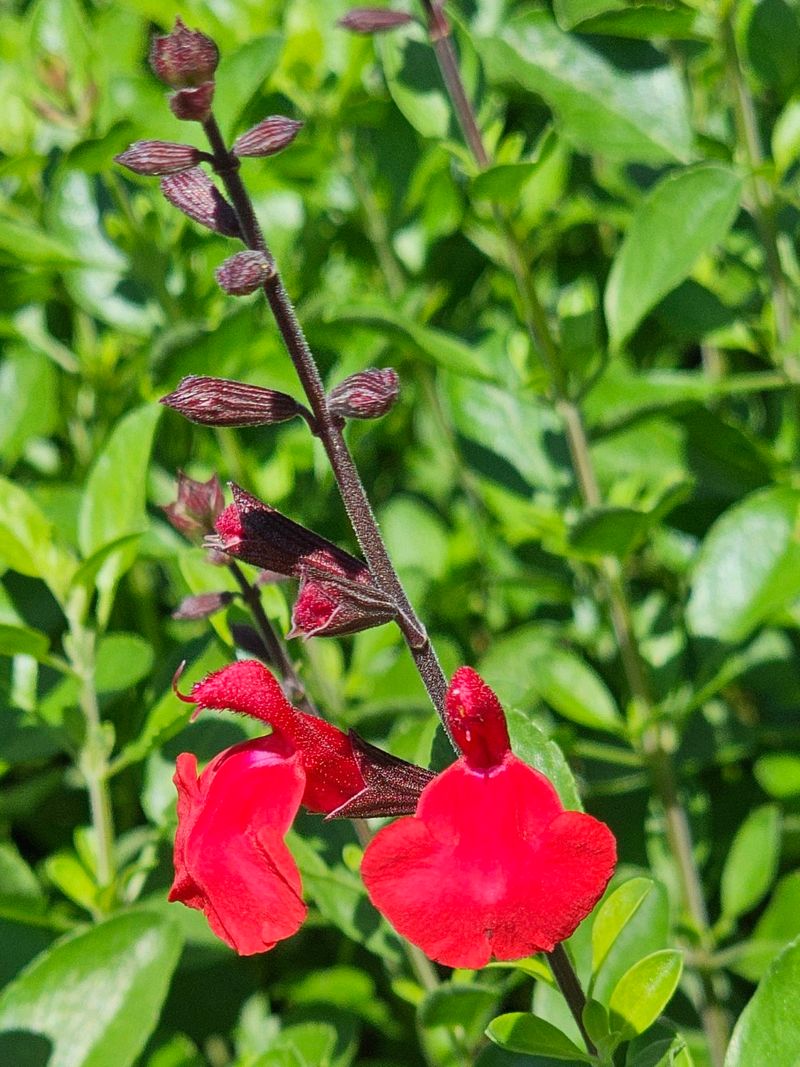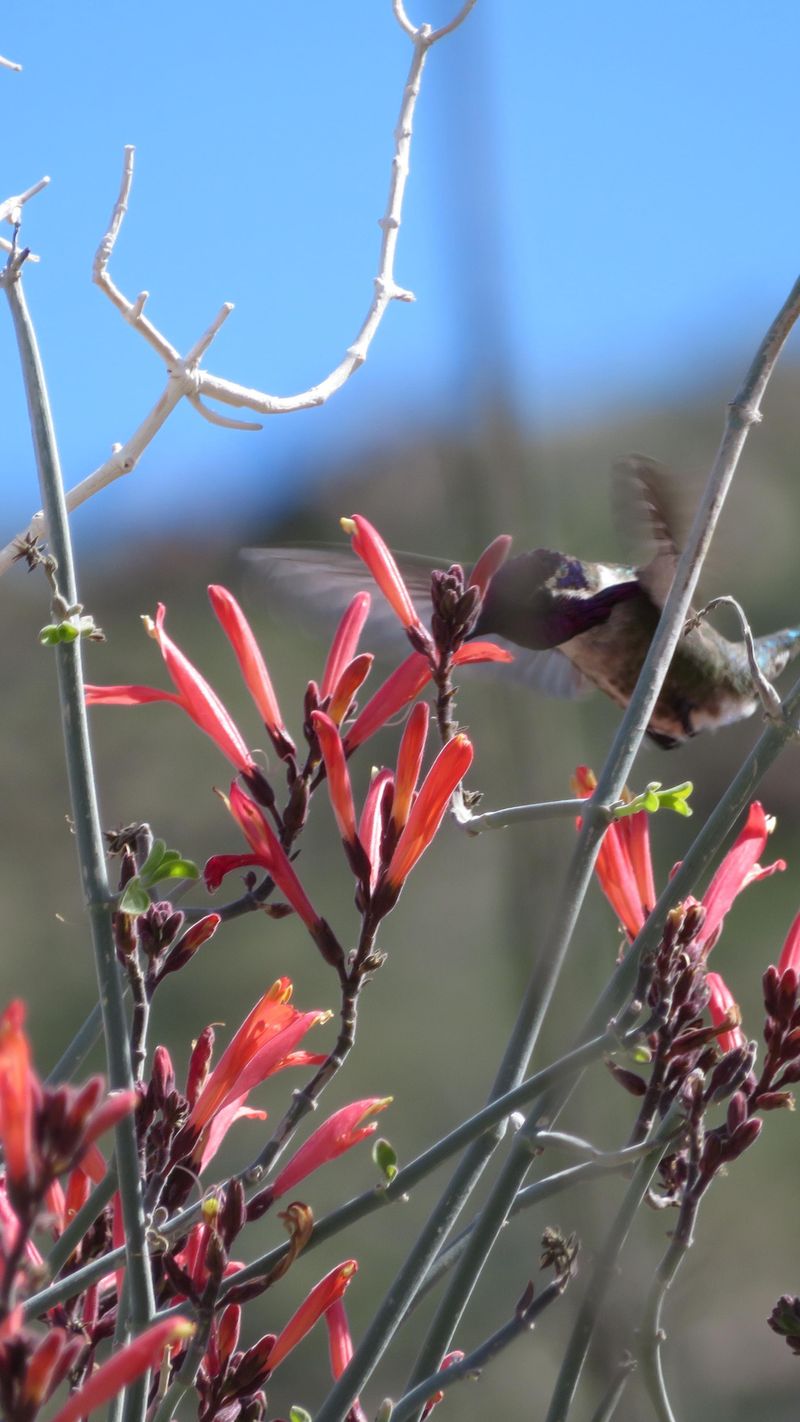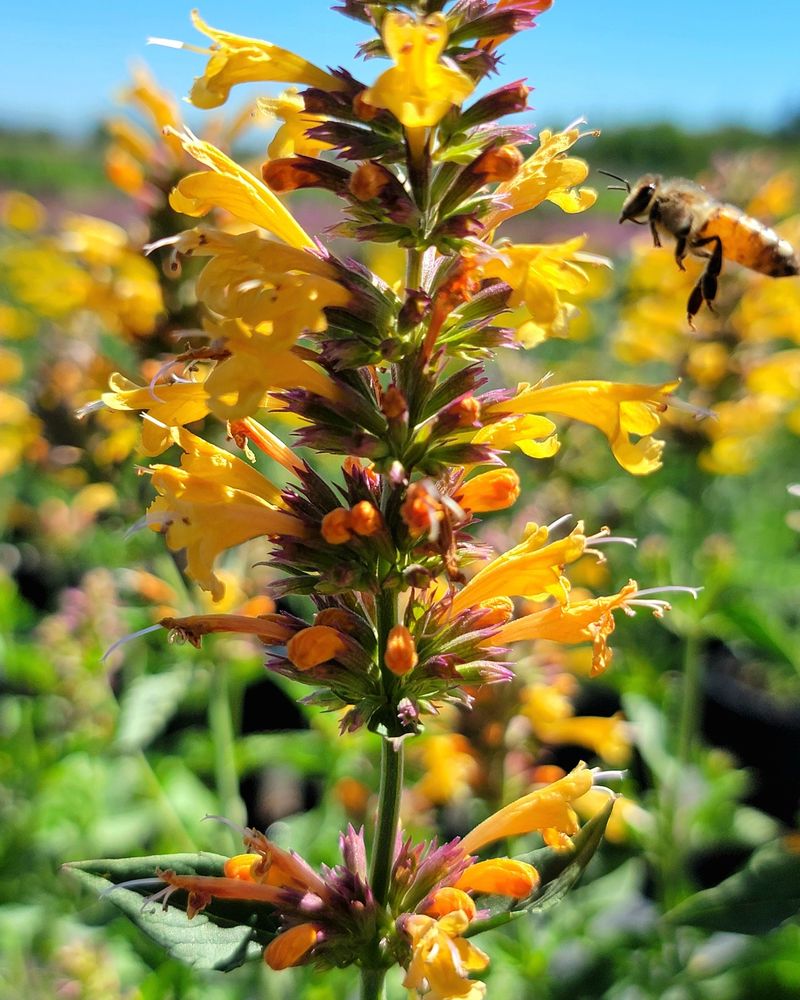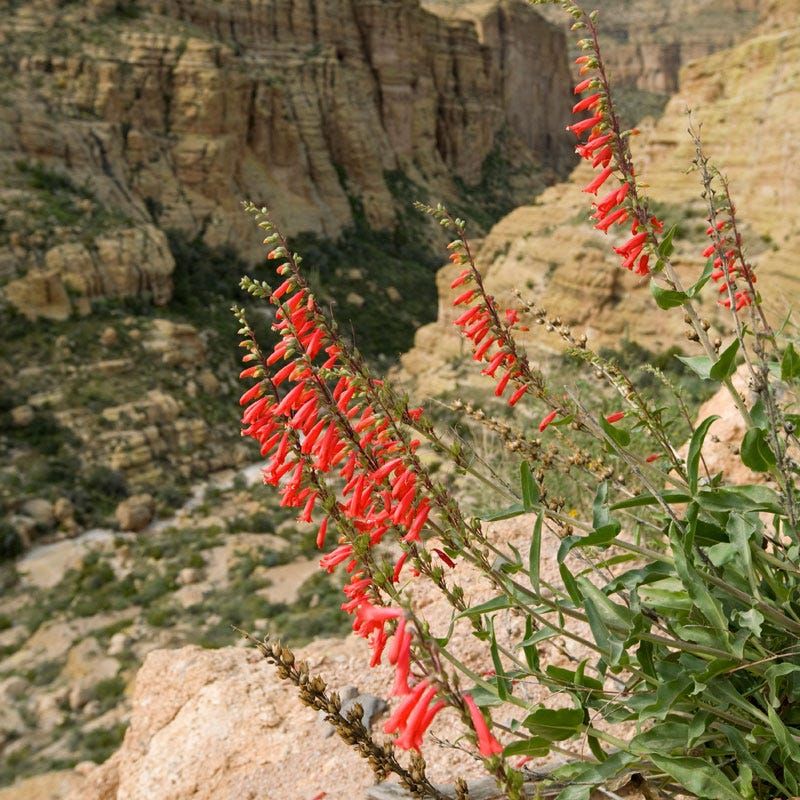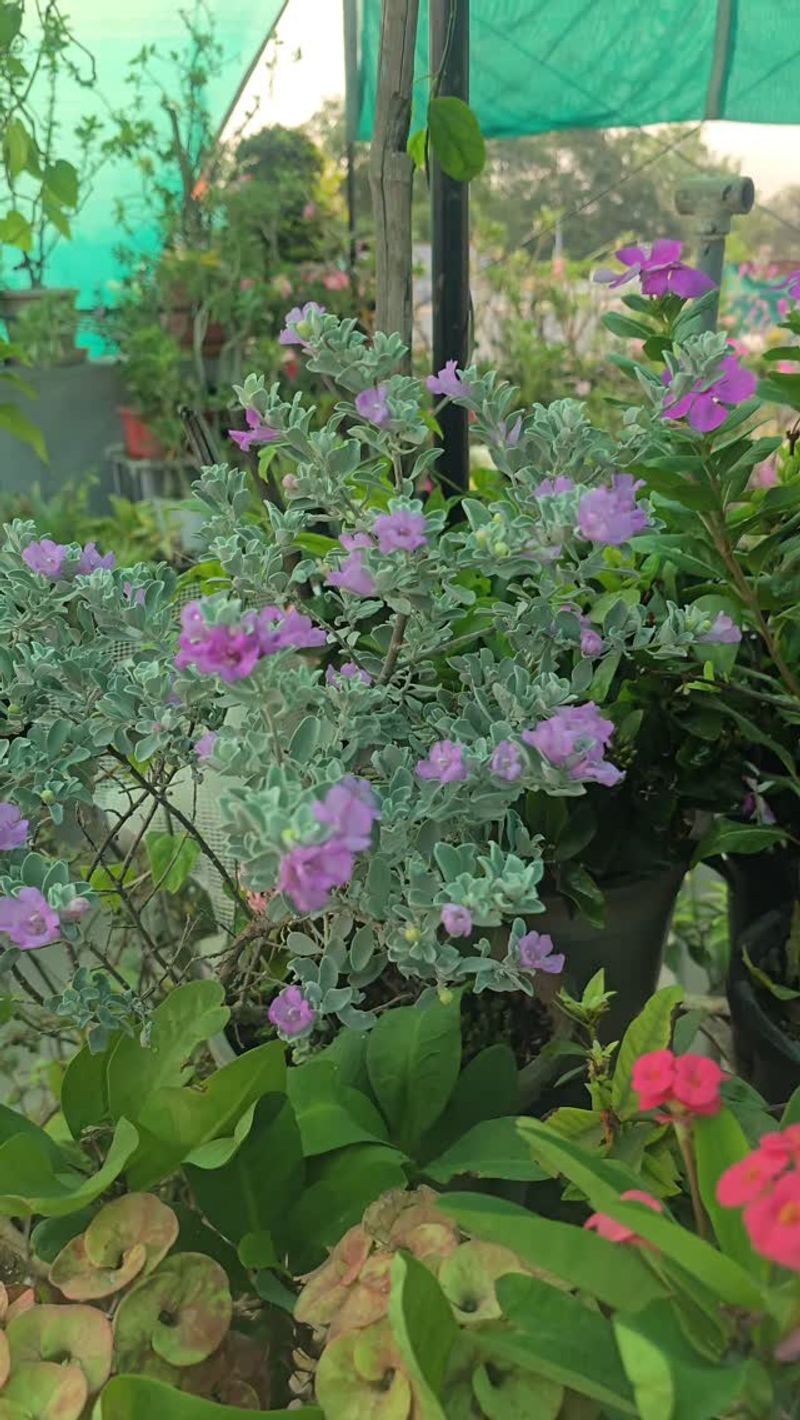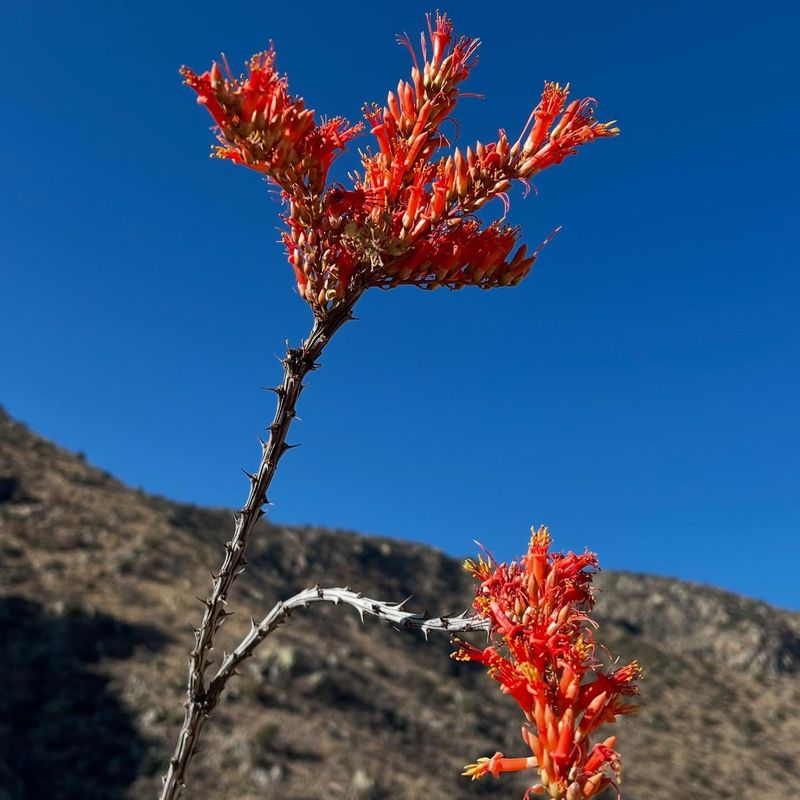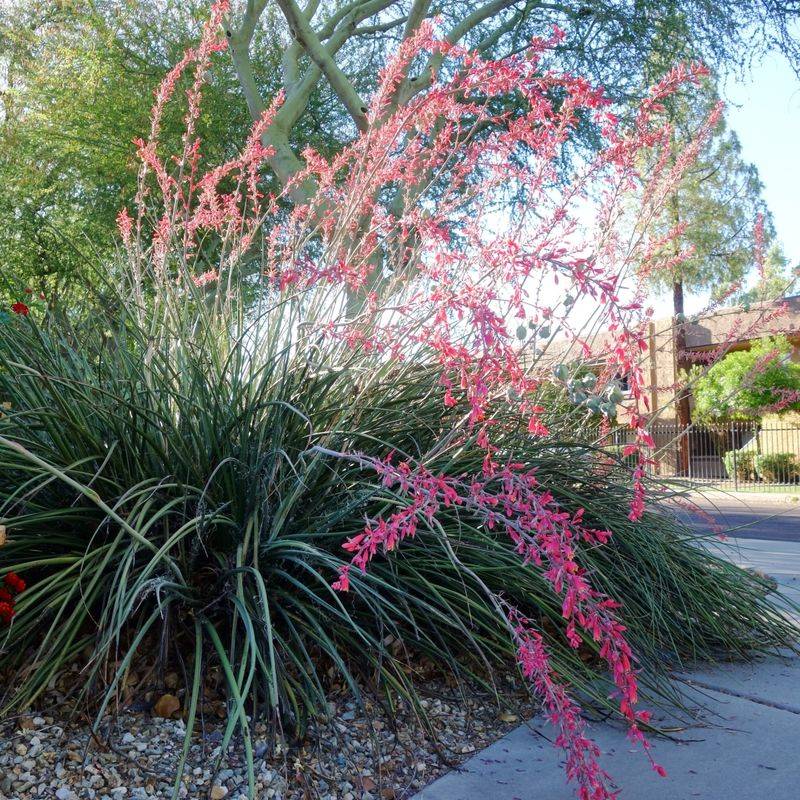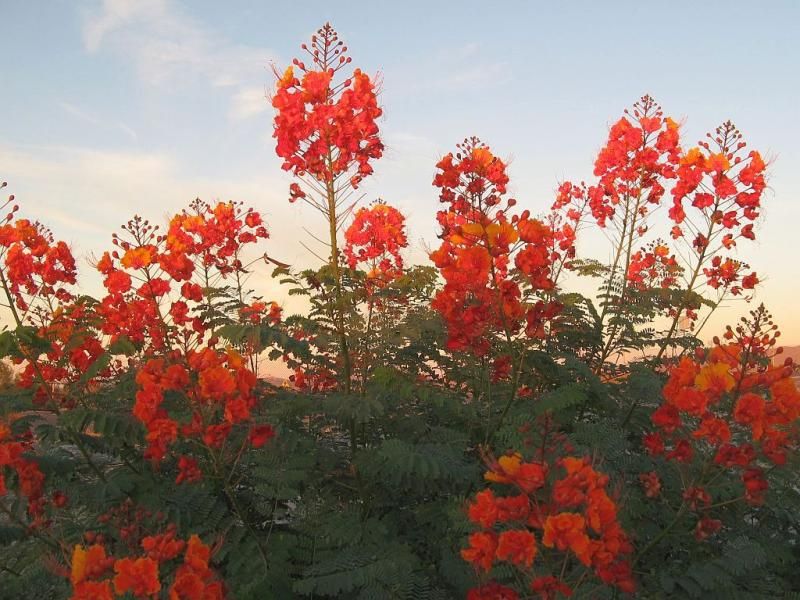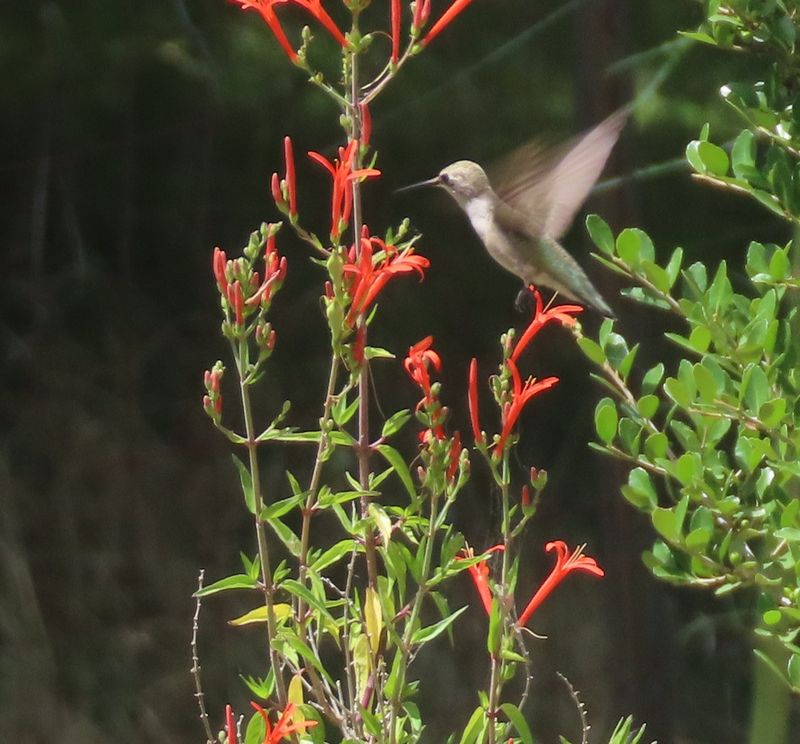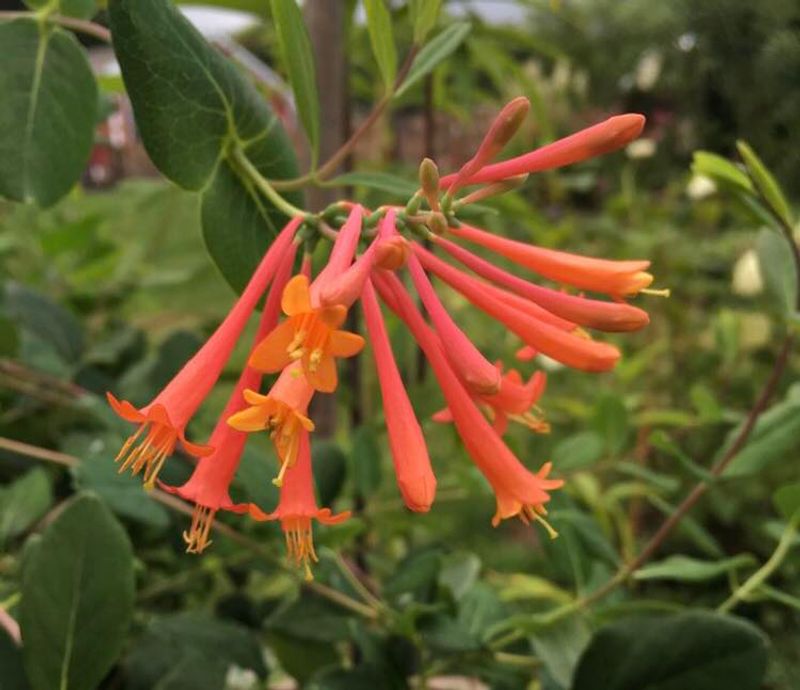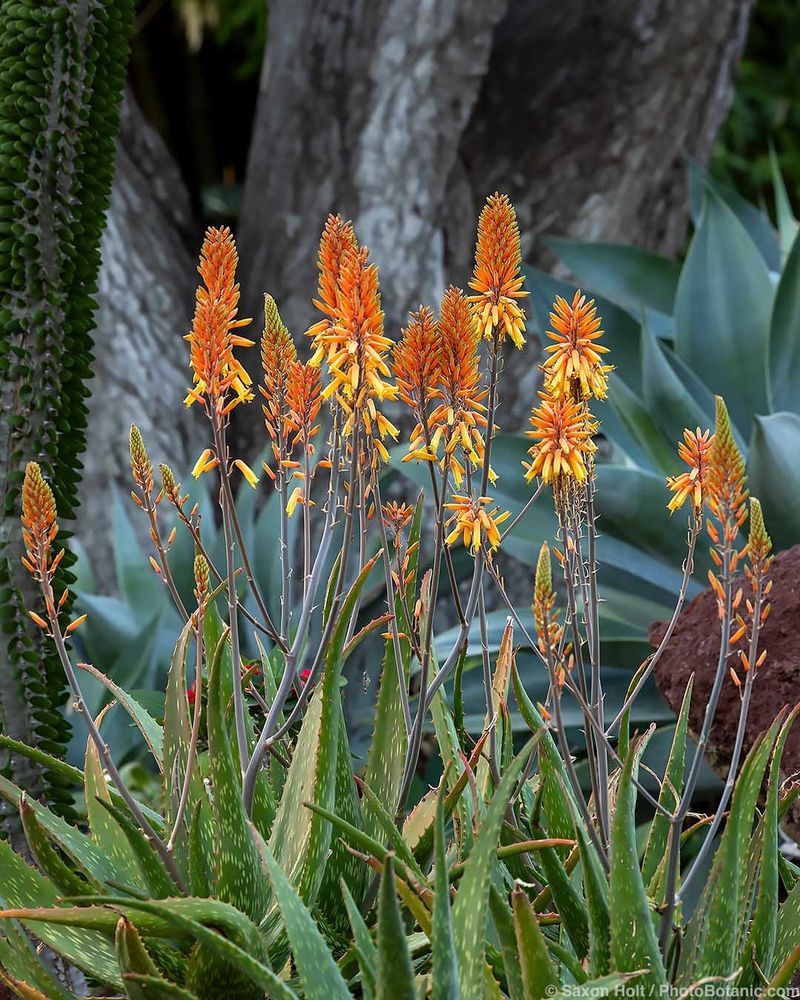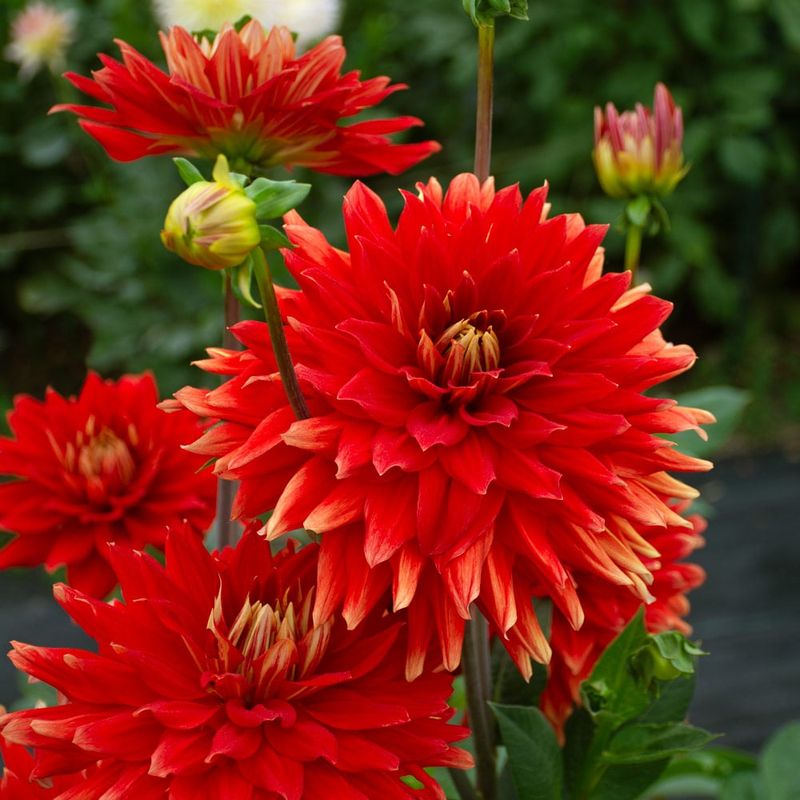When the temps rise and the rain disappears, most gardens start to fade—but not these beauties. These drought-resistant blooms don’t just survive the heat, they thrive in it—and hummingbirds love them for it.
If you’re looking to keep your yard buzzing with color and wings (without constant watering), these heat-loving plants are your new best friends.
1. Salvia ‘Hot Lips’
Red and white bicolor blooms make this salvia stand out in any garden bed. The striking flowers resemble tiny hot lips, giving this drought-resistant perennial its playful name.
Hummingbirds can’t resist the tubular flowers that produce abundant nectar from spring through fall. Native to Mexico, this tough plant thrives in poor soil and blazing sun.
Minimal watering is needed once established, making it perfect for water-wise gardens. Bonus: deer and rabbits typically avoid it due to its aromatic foliage.
2. Desert Willow
Trumpet-shaped pink or purple blooms dangle from this small drought-loving tree throughout summer. Despite its name, Desert Willow isn’t actually a willow but a member of the trumpet vine family native to southwestern deserts.
Hummingbirds flock to its nectar-rich flowers during the hottest months when other plants may struggle. The delicate, orchid-like blooms contrast beautifully with its slender, willow-like leaves.
Growing 15-25 feet tall, it creates dappled shade while requiring minimal irrigation once established.
3. Baja Fairy Duster
Feathery red blooms that resemble delicate feather dusters make this shrub a hummingbird magnet. Native to Baja California, this tough plant laughs at temperatures over 100°F while still producing showy flowers.
The unusual pom-pom shaped blooms appear year-round in warm climates, providing reliable nectar sources when other plants go dormant. Its fine-textured foliage adds an airy quality to xeriscape gardens.
Reaching about 5 feet tall and wide, Baja Fairy Duster needs almost no water once established, making it perfect for desert landscapes.
4. Autumn Sage
Bursting with color from spring through fall, Autumn Sage comes in shades of red, pink, purple, and orange that hummingbirds find irresistible. This compact perennial native to Texas and Mexico thrives in rocky, poor soil where other plants struggle.
The aromatic gray-green leaves release a pleasant scent when brushed against. After summer rainstorms, it often erupts in a spectacular flush of new blooms.
Growing just 2-3 feet tall, Autumn Sage works beautifully in borders, rock gardens, or containers where you can enjoy watching hummingbirds up close.
5. Chuparosa
Brilliant red tubular flowers shaped perfectly for hummingbird beaks make Chuparosa a favorite in desert gardens. The name literally means “hummingbird sucker” in Spanish, revealing its strong connection to these tiny birds.
Native to the Sonoran Desert, this woody shrub blooms heaviest in winter and spring when many migrating hummingbirds are passing through. The plant’s green stems perform photosynthesis even when it drops its small leaves during extreme drought.
Growing 4-5 feet tall, Chuparosa can survive with zero supplemental water once established in desert landscapes.
6. Hummingbird Mint
Spikes of orange, pink, or purple tubular flowers rise above aromatic foliage, creating a sensory delight for both gardeners and hummingbirds. Also called Agastache, this perennial blooms for months during the hottest part of summer when many plants have stopped flowering.
The anise-scented leaves repel deer and rabbits while attracting beneficial insects alongside hummingbirds. Different varieties range from 15 inches to 4 feet tall, offering options for various garden spaces.
Extremely drought-tolerant once established, it performs best with excellent drainage and full sun exposure.
7. Penstemon
Dramatic spires of tubular flowers in shades of red, pink, purple, and blue make Penstemon a standout in water-wise gardens. Native to the American West, different species have adapted to harsh conditions from desert floors to rocky mountainsides.
Firecracker Penstemon, with its brilliant red tubular blooms, ranks among the most popular with hummingbirds. These tough plants shrug off heat, drought, and poor soil while producing abundant nectar.
Most varieties bloom in spring and early summer, providing crucial food for hummingbirds early in the season when other nectar sources may be scarce.
8. Texas Sage
Covered in purple blooms after summer rainstorms, Texas Sage creates a spectacular display that attracts hummingbirds in droves. This silver-leaved shrub, also called Texas Ranger or Cenizo, is native to the Chihuahuan Desert where it endures extreme heat and drought.
Many gardeners use it as a natural barometer – when buds appear, rain is often on the way! The soft, silvery foliage provides beautiful contrast against the vibrant purple flowers.
Growing 5-8 feet tall, Texas Sage makes an excellent drought-resistant hedge or specimen plant that needs almost no care once established.
9. Ocotillo
Fiery red flower clusters top the tall, spiny stems of Ocotillo, creating dramatic vertical interest that doubles as hummingbird fast food. This unusual desert plant looks like a bundle of dead sticks most of the year until rainfall triggers small green leaves to appear along its thorny stems.
In spring, the stem tips erupt with bright red tubular flowers that hummingbirds can’t resist. Native to the Sonoran and Chihuahuan deserts, Ocotillo can survive years of drought.
Growing up to 20 feet tall, this striking architectural plant makes a dramatic statement in desert landscapes while providing valuable nectar.
10. Red Yucca
Coral-pink flower stalks rise dramatically from rosettes of grass-like foliage, creating a sculptural plant that hummingbirds adore. Despite its name, Red Yucca isn’t a true yucca but belongs to the lily family.
The arching flower spikes can reach 5 feet tall and bloom for months during the hottest part of summer. Native to Texas and northern Mexico, this evergreen perennial thrives in poor, rocky soil and blazing sun.
Once established, Red Yucca can survive on rainfall alone in most desert regions, making it perfect for low-maintenance, water-wise gardens.
11. Pride of Barbados
Flamboyant orange-red flowers with long, protruding stamens give Pride of Barbados its show-stopping appeal. Also called Peacock Flower, this tropical-looking shrub is surprisingly drought-tolerant once established.
The fern-like foliage provides a delicate backdrop for the bold flowers that bloom throughout the hottest months of summer. Hummingbirds are particularly attracted to the bright blooms that appear when many other plants have stopped flowering.
Native to the Caribbean and Mexico, this heat-loving plant can reach 6-10 feet tall in warm climates but can also be grown as a die-back perennial in cooler zones.
12. Parry’s Penstemon
Electric pink trumpet-shaped flowers emerge in dense clusters on this native wildflower, creating a neon display in the desert. Found naturally in the Southwest, Parry’s Penstemon has evolved to thrive in poor, rocky soil with minimal rainfall.
The bright blooms appear in early spring, providing crucial nectar for hummingbirds returning from migration. Growing just 1-2 feet tall, this compact perennial works beautifully in rock gardens or border edges.
Plant in well-draining soil and full sun for best results. Once established, it needs almost no supplemental water even in the hottest conditions.
13. Flame Acanthus
Fiery orange-red tubular flowers blanket this woody shrub during the hottest months of summer, earning it the nickname “hummingbird bush.” Native to Texas and northern Mexico, Flame Acanthus has evolved to bloom during extreme heat when many plants go dormant.
The small, trumpet-shaped flowers are perfectly sized for hummingbird beaks. Dark green foliage provides nice contrast to the vibrant blooms that appear from June until frost.
Growing 3-5 feet tall, this tough plant thrives in poor soil and full sun, requiring almost no supplemental water once established in most regions.
14. Trumpet Vine
Spectacular orange or red trumpet-shaped flowers dangle from this vigorous climbing vine, creating a hummingbird paradise. Sometimes called “hummingbird vine,” this plant produces exactly the kind of tubular flowers these birds prefer.
Native to the southeastern United States, Trumpet Vine has adapted to thrive in poor soil and hot, humid conditions. The large, showy flowers appear throughout summer, providing reliable nectar for months.
This enthusiastic grower needs sturdy support like a fence or arbor. Be aware of its spreading tendency – in ideal conditions, it can become aggressive if not managed.
15. Coral Honeysuckle
Tubular coral-red flowers filled with sweet nectar make this native vine a hummingbird favorite. Unlike its invasive Japanese cousin, Coral Honeysuckle (Lonicera sempervirens) is well-behaved and beneficial to wildlife.
The trumpet-shaped blooms appear from spring through fall, followed by red berries that attract songbirds. Blue-green foliage provides an attractive backdrop for the vibrant flowers.
This adaptable vine can climb 10-15 feet on a trellis or fence. While it appreciates occasional deep watering during extended drought, it’s remarkably resilient once established in most garden conditions.
16. Aloe Vera
Striking orange-red tubular flowers rise on tall stalks above rosettes of succulent leaves, surprising many who know Aloe only as a medicinal plant. In warm climates, mature Aloe plants send up these impressive flower spikes in winter or early spring.
Hummingbirds eagerly visit these nectar-rich blooms when few other plants are flowering. The thick, water-storing leaves enable this plant to thrive through months of drought.
Beyond attracting wildlife, Aloe gel inside the leaves soothes burns and skin irritations. Plant in well-draining soil and full to partial sun for best results.
17. Cactus Dahlias
Vibrant flowers with pointed, quill-like petals make Cactus Dahlias stand out in the summer garden despite the misleading name. These aren’t actually cacti but water-efficient tuberous plants that produce abundant blooms in hot weather.
Available in nearly every color except true blue, these show-stopping flowers attract hummingbirds with their bright colors and nectar. The spiky flower form adds dramatic texture to garden beds or containers.
While not as drought-tolerant as true desert plants, established Cactus Dahlias need much less water than traditional garden flowers, making them perfect for low-water borders.

